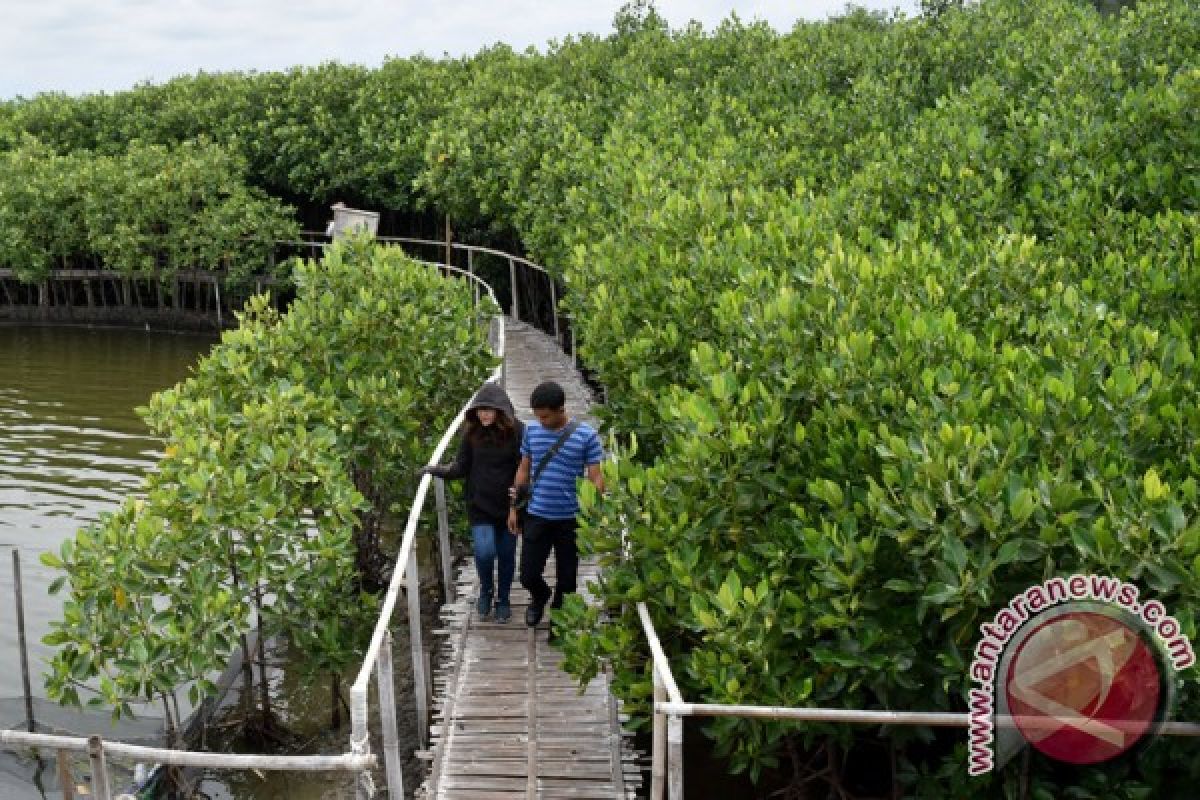With the Coordinating Ministry of Maritime Affairs and Investment, the Ministry of Maritime Affairs and Fisheries (KKP), the National Development Planning Ministry (Bappenas), and the Indonesian Peat Restoration Body (BRGM), the KLHK ministry established the Mangrove Information Center (PIM) Delta Mahakam in Saliki Village, Muara Badak Sub-district, Kutai Kartanegara District, for the East Kalimantan Modern Mangrove Nursery.
Mangrove rehabilitation is one of the government’s responsibilities to restore the mangrove ecosystem. The labor-intensive mangrove planting program can improve the community’s economy near the mangrove ecosystem as well as maintain its sustainability.
The modern mangrove nursery in PIM Delta Mahakam will be covering an area of 25 hectares, with a production capacity of mangrove seeds reaching 10 million per year, with a production cycle of two to three times per year.
The modern mangrove nursery is estimated to absorb labor equivalent to 10 thousand working hours per month or 120 thousand working hours per year.
Data from the KLHK Ministry in 2021 recorded that Indonesia has a mangrove area of 3.31 million hectares, but 19 percent of it was in a damaged condition and in need of immediate rehabilitation.
The government has targeted mangrove rehabilitation in an area spanning 483 thousand hectares for the 2021-2024 period in nine priority provinces: North Sumatra, Riau, Riau Islands, Bangka Belitung, West Kalimantan, East Kalimantan, North Kalimantan, Papua, and West Papua.
In East Kalimantan Province, mangrove rehabilitation is planned to be conducted on 27,244 hectares of land during that period.
In 2021, some 6,634 hectares have been restored, followed by 6,870 hectares in 2022, while in 2023, it will restore an area of 6,870 hectares and another 6,870 hectares of land in 2024.
As of September 2023, Indonesia's mangrove forests -- which are the largest mangrove forest area in the world -- dominated more than 24 percent of the world's total mangrove area, reaching 3.36 million hectares.
Some 3.14 billion tons of blue carbon are estimated to be stored in mangrove forests, which is part of Indonesia’s efforts to contribute in reducing greenhouse gas emissions (GHG) in accordance with Indonesia's strong commitment stated in its Nationally Determined Contribution (NDC) that can be achieved through carbon absorption in Forests and other Land Use (FoLU) by 2030.
NDC is a document containing a country's climate commitments and actions that are communicated to the world through the United Nations Framework Convention on Climate Change (UNFCCC).
In 2015, some 196 countries agreed to the Paris Agreement to jointly maintain global temperature rise below two degrees Celsius and push it further towards 1.5 degrees Celsius.
Meanwhile, mangrove forests are coastal ecosystems that support life by reducing the impact of waves and extreme weather, protecting beaches from abrasion, preventing abrasion and erosion, preventing seawater intrusion, becoming a food source, becoming home to biodiversity, filtering pollutants, and supporting the livelihoods of local communities, especially fishermen.
Related news: Efforts to achieve Indonesia's mangrove rehabilitation target
Community Collaboration
Although it is not included in a priority province, the north coast area of Java Island, especially in Central Java, is also prone to tidal disasters almost every year.
The Semarang, Demak, Pati, Rembang, and Jepara areas are the most affected regions to this flood disaster.
In response to this phenomenon, the Djarum Foundation Bakti Lingkungan (the Djarum Foundation Environmental Service/BLDF) initiated a mangrove planting movement since 2008 in Mangkang Mangunharjo Village, Semarang City, through the Djarum Trees for Life (DTFL) program, which continues to be implemented until now.
“In 2021, the movement was able to plant more than one million mangroves,” Djarum Foundation’s Vice President Director FX Supanji remarked.
This achievement is also a form of the organization's commitment to supporting government programs.
Mangrove trees were chosen as part of the program, considering their significant role to balance the biodiversity, especially for natural disaster mitigation.
Meanwhile, the Mangkang Mangunharjo Village was chosen as the location since it is prone to abrasion.
Mangrove preservation plays an important role in maintaining natural ecosystems. It is proven now that the village is relatively safer from tidal floods.
Through collaboration with communities, this program has restored the 2,700-meter-long coastal ecosystem in the region.
Sururi, one of the trained mangrove farmers, stated that the residents gain new knowledge from researchers and academics invited to collaborate by the foundation, thereby enriching their insights regarding derivative mangrove products.
He had even passed on the knowledge of mangrove farming to his children, hoping that the next generation would continue to preserve mangroves in the area.
Meanwhile, in terms of economic development, the community’s welfare is improving in line with the recovered water ecosystem that helps fishermen’s business and craft centers that are emerging as derivative industries from mangrove rehabilitation.
Apart from bringing about improvement in ponds, earlier damaged by abrasion, the fishing community in the village is currently revitalizing the village economy by cultivating green mussels and fish cages.
Residents are also involved in the batik craft business using natural dyes from mangrove pigments and producing syrup made from mangrove fruit.
Related news: Governor invites public to help preserve mangrove ecosystem
Green belt
Mangroves are also known to have various benefits, including providing a source of livelihood for the community, reducing floods, preventing seawater intrusion onto land, stabilizing coastlines and controlling erosion, creating green belts on the coast, and supporting mitigation and adaptation to global climate change.
Unfortunately, more than 60 percent of the mangrove forests had been damaged due to conversion for various interests, including the construction of various public infrastructure and settlements.
The existence of mangroves on the coastline also functions as a green belt that can minimize erosion or lowering of groundwater levels.
If flood or sea water overflows, the mangrove ecosystem can hold back the water flow.
The mangrove ecosystem in Palu City, Central Sulawesi, can also minimize the impact of damage in mangrove areas during the earthquake and tsunami that hit the city since it can hold the sea water with its dense vegetation.
Moreover, in the 2004 tsunami in Aceh, areas with mangrove forest had less damage as compared to other areas with no mangrove forest.
Hence, mangrove restoration is deemed necessary to protect Indonesia's coastlines from disasters.
A report published by the United Nations Office for Disaster Risk Reduction (UNDRR) Asia-Pacific in 2020 stated that mangrove ecosystems can become a buffer area to prevent and reduce the impact of natural disasters on humans and infrastructure.
The report also highlighted that Indonesia's coastal areas experiencing erosion and flooding, such as in northern Java, required an innovation of mangrove rehabilitation and technical measures.
These technical steps must be carried out in line with the socio-economic approach, including to encourage inclusive economic growth in coastal areas with sustainable aquaculture solutions with the community’s contribution as well.
Related news: BNPB promotes mangrove planting as tsunami mitigation measure
Editor: Yuni Arisandy Sinaga
Copyright © ANTARA 2023












